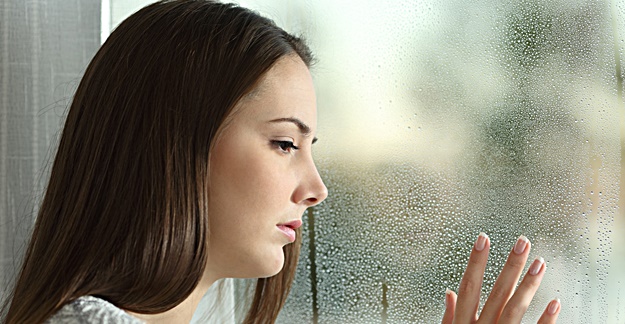When the days get shorter, some of us begin to feel gloomy and affective disorder occurs. If that feeling deepens into a depression that interferes with your daily life, you may have seasonal affective disorder.
Seasonal affective disorder, or SAD, is a depression that may begin almost any time in the fall. For some people it begins when the summer months are over, and for others it may not start until daylight savings time ends in early November.
It also tends to recur every year, or most years. “When working with patients, this may be their first presentation for a mood problem, but when they look back retrospectively it becomes very apparent that around the same time each year as the light begins to diminish, their [symptoms] escalate,” says Alan Schwartz, PsyD, the director of behavioral health integration at Christiana Care Health System in Delaware.
Besides depression, SAD can also include other symptoms that don’t seem to be directly related to your mood. Besides feeling sad or having low energy, some people with the condition gain weight or crave carbohydrates during the colder months. Some experience sleep problems, for example, sleeping more than usual and having a very difficult time waking up each morning.
Very mild symptoms may not require treatment, aside from making sure to get exercise, good nutrition and full nights of sleep. But you should see a professional if the symptoms are interfering with your daily life. For example, if you can’t make it to work on time because of trouble waking up, or if you drop exercise or socializing out of your schedule because you’re low on energy, it’s time to seek help.
Your primary care physician is a good place to start, says Dr. Schwartz, to rule out other conditions that could cause fatigue and other symptoms. If you do have SAD, you’ll probably be referred to a mental health provider. Here are the 3 most common and effective types of treatments for SAD.
Browse This Article
Light Therapy
Light therapy, or phototherapy, is considered the first line-treatment for SAD. Exposing yourself to bright light in the morning can counteract the effect the darkness has on your brain.
Light therapy takes the form of a cool white light fixture, in a device that looks like a TV screen that produces intense white light instead of a picture. To use the device, you set it up near your face — for example, on your kitchen table as you are eating breakfast — and allow yourself to be exposed to the light for the amount of time your provider recommends. This could be anywhere from 30 minutes to a 3-hour session each morning. The main downside to this treatment, for many people, is simply finding the time.
Most people respond well to this extra light in the morning. “If that doesn’t start to work in a few days, or makes them worse, we switch the light timing to 7:00 to 9:00 in the evening,” says Al Lewy, MD, PhD, professor emeritus of psychiatry at Oregon Health and Science University in Portland. Morning and evening lights have opposite effects on the body’s circadian rhythms, so your provider will tell you to do one or the other, not both.
Phototherapy devices don’t produce ultraviolet or “full spectrum” light. Instead, they emit white light at a very bright intensity, between 2,500 and 10,000 lux. The instructions that come with the device will tell you how far away to position the device from your eyes to use the light safely and effectively, says Dr. Lewy. You don’t need to stare directly at the light, but should face the general direction of the light and scan your eyes across it. Side effects are not common, Dr. Schwartz says, but can include eyestrain or nausea. If you do experience problems, your provider can try lowering your “dosage” of light.
You can start to feel the benefits from phototherapy in as little as 2 days, and will typically feel the full effect within 2 weeks. Once you start feeling better, it may be okay to use the light box less often. Treatment continues through the winter, and you should be able to stop using it in the spring when the days get longer.
Medication
Medication options for SAD are similar to the medications used for other types of depression, and commonly include selective serotonin reuptake inhibitors, or SSRIs.
Side effects of these medications can include gut problems like nausea and diarrhea, and can cause headaches or an agitated, jittery feeling. For some people, the symptoms only occur during the first few weeks on the drug, but for others they persist. If the side effects are severe, you may need to stop taking the drug.
Antidepressant medication doesn’t work instantly, so your provider can start you on the medication before you expect each year’s symptoms to kick in. It may take 6 to 8 weeks for the medication to fully take effect.
Talk Therapy for Affective Disorder
While the other treatments alter your brain chemistry more directly, cognitive behavioral therapy, or CBT, can give you the mental tools to challenge depressive thoughts. It’s often used in conjunction with light therapy and medication.
Sessions of CBT involve talking to a psychologist for weekly sessions of 30 to 60 minutes, although as you learn the technique, you may not need to come in as often. CBT focuses on identifying problematic thoughts and exploring how they are connected to your behavior. If you can identify those thoughts when you begin to have them, and challenge how accurate those thoughts are, you can change your way of thinking about the world.
“Therapy can work sometimes, which is particularly challenging while you’re depressed,” says Dr. Schwartz. If you stick with it, though, CBT has more lasting effects than the other types of therapy. Next year, for example, your medication and light therapy would have long since worn off, but you can use the techniques from CBT to deal with depression as soon as it begins to occur.







